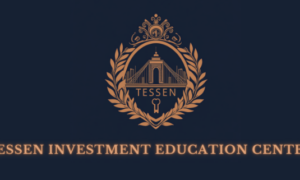Entertainment is a powerful tool that can be used to engage, educate, and entertain audiences of all ages. When used correctly, entertainment can be a powerful tool for learning. When used incorrectly, entertainment can be a powerful tool for distraction.
The goal of this guide is to help you use entertainment to its fullest potential. We’ll explore the different types of entertainment, the benefits and drawbacks of each, and how to use entertainment to achieve your educational goals.
What is educational entertainment?
In general, educational entertainment can be defined as any type of media or entertainment that is designed to educate or inform its audience. This can include everything from educational television shows and movies to video games and apps that teach people about a specific subject.
This type of entertainment is often used in classrooms and other educational settings in order to help people learn new information or concepts. One of the most common forms of educational entertainment is television.
There are many different types of educational shows that are aimed at teaching children and adults about a variety of topics. These shows can cover everything from history and science to math and reading.
In addition to television, radio and music can also be used to educate people about a variety of topics and olden days wisdom. You can leverage Naijium and find a ton of this. There are many different types of radio shows and songs that are designed to teach people about the modern day wisdom as well.
Mixing education and entertainment
Education doesn’t have to be boring. In fact, it can be quite entertaining. This is especially true when it comes to children and teens. One of the best ways to make learning fun is to mix education and entertainment. This can be done in a variety of ways. One way is to use educational games. These can be found online or in stores.
Another way to mix education and entertainment is to use educational films. These films can teach children and teens about a variety of topics. For example, they can learn about history or science. You can use educational television shows. These shows can also teach children and teens about a variety of topics. For example, they can learn about math or English.
Also, music doesn’t have to be for parties only. It can be used to teach children and teens. For example, you can use songs to teach them about math or English. You can also use songs to teach them about history or science. These are just a few ways that you can mix education and entertainment.
Gamification in education and entertainment
Gamification is a process of using game components and design in non-game contexts. It has been used in education as a means of engaging students and encouraging them to learn. In the entertainment industry, gamification has been used to increase customer engagement and loyalty.
Education promotes learning by providing students with incentives to complete tasks and goals. In the classroom, this can take the form of badges, leaderboards, and rewards. Gamification can also be used to teach21st-century skills such as collaboration, communication, and critical thinking.
Entertainment uses game elements to keep users engaged. This can include features such as leaderboards, badges, and rewards. Gamification has been used in social media, fitness apps, and online games. It can also be used to increase customer loyalty in the retail and hospitality industries.
15 ways to gamify education and make it more interesting
There are many ways to gamify education and make it more interesting. Here are a few ideas:
1. Introduce a scoring system for tasks and assignments
A scoring system can make education more interesting by adding a competitive element to it. It will also motivate students to complete their tasks and assignments. Also, a scoring system can produce better results than a traditional grading system.
However, consideration must be given to the type of tasks and assignments being scored. For example, some tasks may be more difficult to score than others. In addition, the scoring system should be fair and transparent.
The teacher can also use a scoring system to monitor the student’s progress. This will help the teacher identify the areas where the students need more help.
2. Use game-based learning
Game-based learning is a great way to make education more interesting. It helps students learn by playing games. Game-based learning can be used in different subjects such as math, science, and history.
Most kids love playing games. If you can use games to teach them, they will be more interested in learning. The best part about game-based learning is that it can be used in any subject. For example, you can use games to teach math concepts.
3. Make use of virtual reality
Virtual reality can also be used to make education more interesting. It can help students visualize concepts and ideas. Virtual reality can be used in different subjects such as math, science, and history.
For the math class, teachers can create a virtual reality game where students have to solve math problems to. For the science class, students can be taken on a virtual field trip where they can learn about different scientific concepts. History can also be brought to life with virtual reality. Students can be transported back in time to experience different historical events.
4. Use video games
Video games can also be used to make education more interesting. Video games can help students learn playing them. Video games can be used in different subjects such as math, science, and history. The influence of video games on children ’s learning has been the subject of many studies. Some say that video games improve children’s learning abilities, while others claim that video games have a negative impact on children’s learning.
However, many educational video games can be used to teach children. These games can be used to teach children different concepts and skills. There are many different types of educational video games, such as puzzle games, logic games, memory games, and word games.
6. Allow students to unlock rewards as they complete tasks
Nothing motivates quite like the promise of a reward, and this is especially true for students. By allowing them to unlock rewards as they complete tasks, you can add an element of fun and excitement to their learning process.
Psychologically speaking, this also taps into the student’s natural desire for a sense of accomplishment. As they receive rewards, they will feel a sense of pride and satisfaction, which will in turn spur them on to continue working hard. Gamifying education in this way can help to boost students’ engagement and motivation.
7. Use leaderboards to encourage friendly competition
Leaderboards are a great way to gamify education and encourage friendly competition among students. By tracking their progress and awarding points for correct answers, you can keep students engaged and motivated to learn.
The concept of leaderboards can also be applied to other areas of education, such as homework completion and class participation. By tracking progress and awarding points, students will be more likely to stay on top of their work and be active in class.
8. Create quests and challenges for students to complete
Quests and challenges are another great way to gamify education and make it more interesting. By giving students specific tasks to complete, you can help them learn new material while also having fun.
Children tend to love competition. So, set up a leaderboard where students can see how they rank against their classmates. Alternatively, you could give out prizes for students who complete the most quests or challenges.
9. Offer rewards for completing tasks quickly and correctly
In addition to offering rewards for simply completing tasks, you can also offer bonus rewards for those who complete them quickly and correctly. This will encourage students to focus on their work and learn the material more effectively.
Also, these tasks don’t have to be limited to schoolwork only. You can extend this to household chores, personal goals, and anything else you’d like. However, make sure the rewards are something that the students actually want.
10. Use game-like graphics and sounds to create a more immersive experience
You can also consider using game-like graphics and sounds to create a more immersive experience. This can help students feel like they’re playing a game, which can make learning more fun and engaging.
What we see with our eyes and what we hear with our ears can strongly influence how we feel. So, if you want students to feel more engaged and motivated, make sure the visuals and audio in your educational games are high quality.
Music, for example, can be used to create an emotional state that can make gameplay more intense and exciting. While visuals can be used to create a sense of immersion, making it feel like the player is inside the game.
11. Encourage students to create their games
When you allow students to create their own games, they are more engaged and enthusiastic about playing them. This also allows them to be more creative and to come up with new ideas.
Education and entertainment don’t have to be mutually exclusive. They can work together to create a more engaging and fun learning experience. This way, students will be more likely to retain the information they’ve learned.
12. Make the gameplay challenging but achievable
If a game is too easy, students will get bored quickly. But if it’s too hard, they’ll get frustrated and give up. So, it’s important to find the right balance and make the gameplay challenging but achievable.
This sweet spot will keep students engaged and motivated to keep playing. As they overcome challenges and progress in the game, they’ll also be developing new skills and knowledge.
13. Use positive reinforcement to encourage students
Positive reinforcement is a powerful tool that can be used to encourage students. When students are praised for their efforts or achievements, they’ll be more likely to continue playing and doing their best.
You can use positive reinforcement in the form of in-game rewards, such as points, badges, or unlockables. You can also give students real-life rewards, such as certificates or prizes.
14. Get feedback from students and use it to improve the game
It’s important to get feedback from students so you can continue to improve the game. Ask them what they like and don’t like, and what they think could be improved.
You can use this feedback to make changes to the game, such as adding new features or adjusting the difficulty. Getting feedback from students will also help you gauge how well the game is working and whether it’s achieving its educational goals.
15. Use augmented reality
Augmented reality can be used to gamify education. This technology can be used to create interactive and engaging learning experiences. Some of the ways augmented reality can be used to gamify education.
Use cases can be found across all subject areas and grade levels even from existing educational games. For example, in history class, students can use augmented reality to explore ancient civilizations. In science class, students can use augmented reality to study the solar system.
This technology can also be used to create interactive games and challenges that students can compete in. Augmented reality can make learning more fun and exciting for students.
Conclusion
Educational entertainment is the perfect way to learn something new while having fun. It can be used to teach children and adults alike. There are many different types of educational entertainment, so there is sure to be something for everyone. Gamification is a great way to keep you engaged and interested in what you’re learning. Whether you’re playing by yourself or with others, educational entertainment is a great way to learn while enjoying yourself.
Finally, you can use existing games and modify them to fit the educational needs of your students. For example, you can use Minecraft to teach math concepts or use Angry Birds to teach physics. By gamifying education, you can make learning more fun and engaging for students. This approach can help to improve student attention and retention and reduce disruptive behavior in the classroom.



































